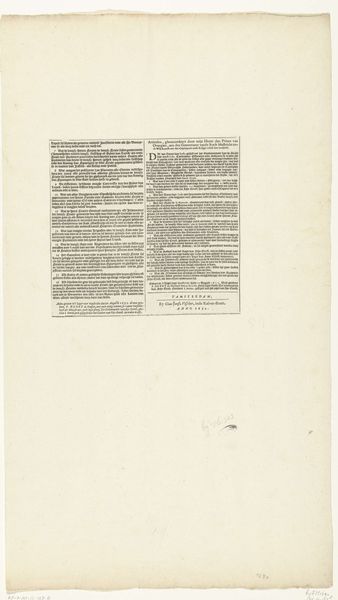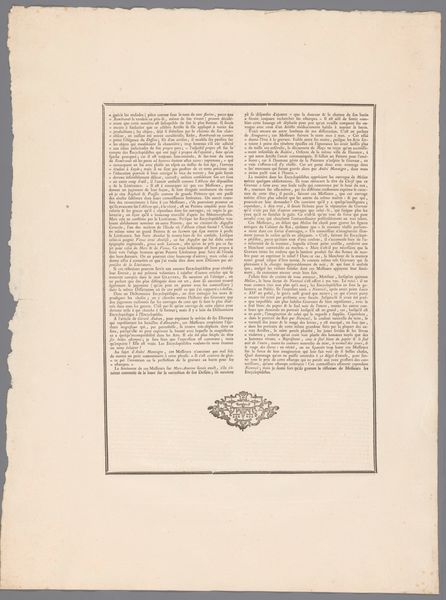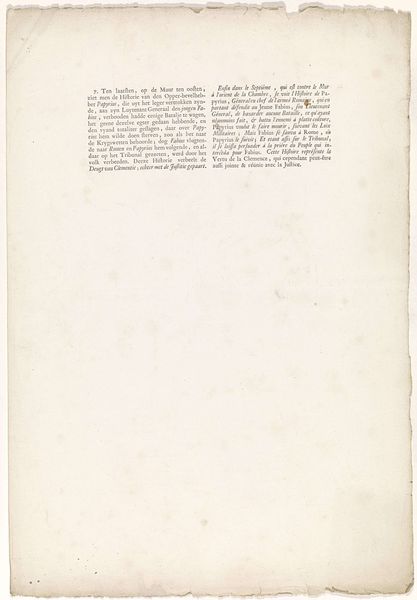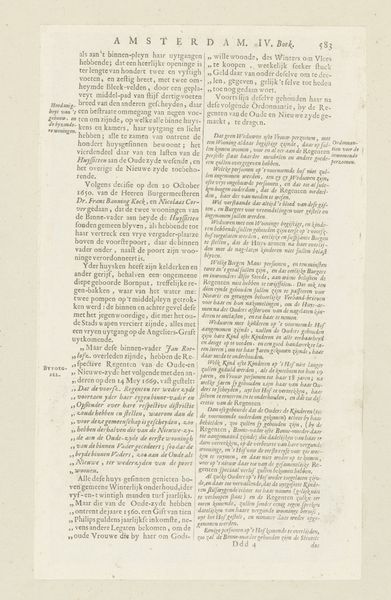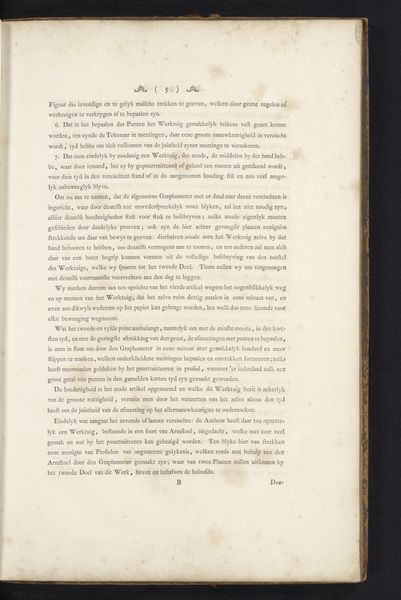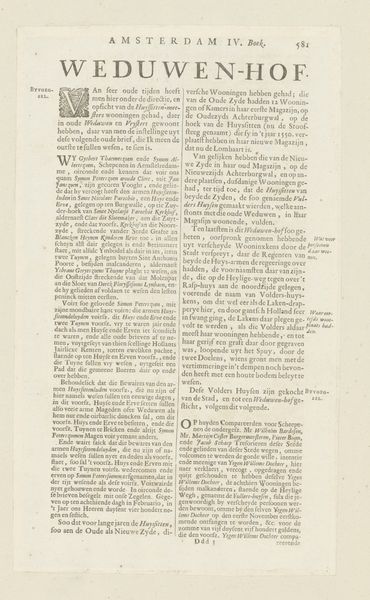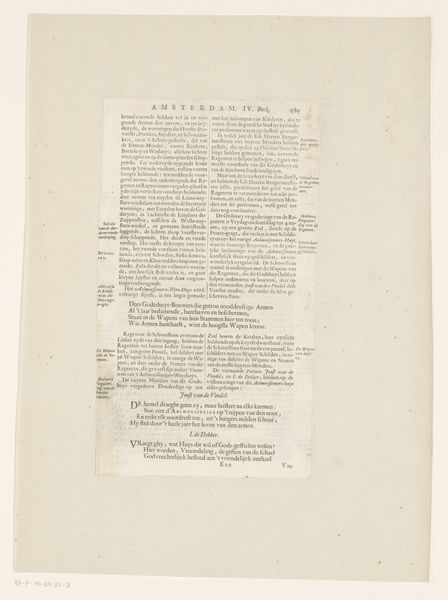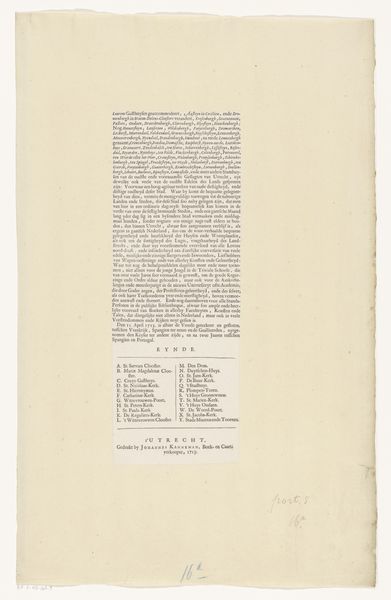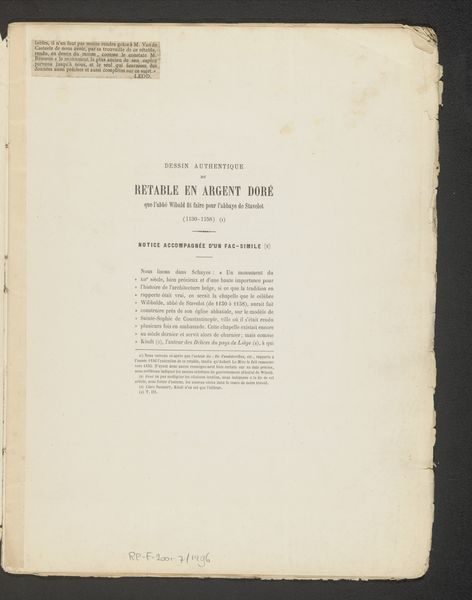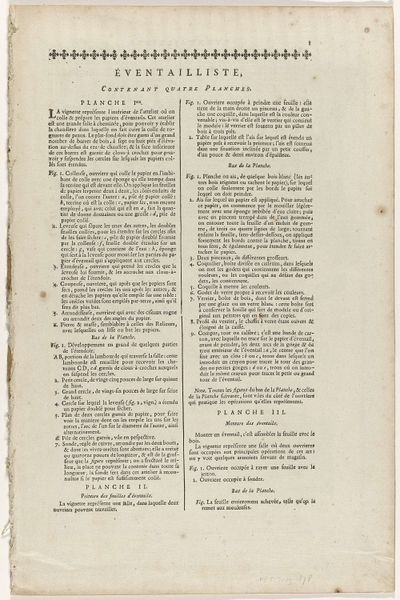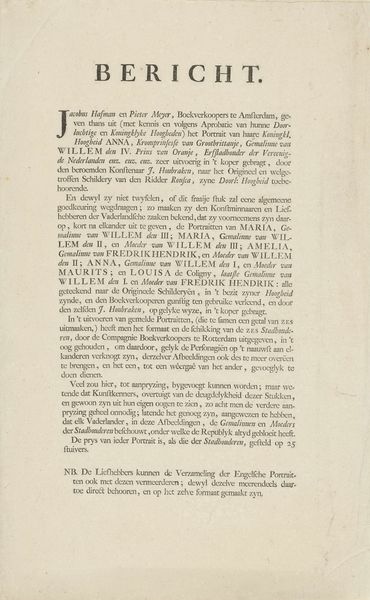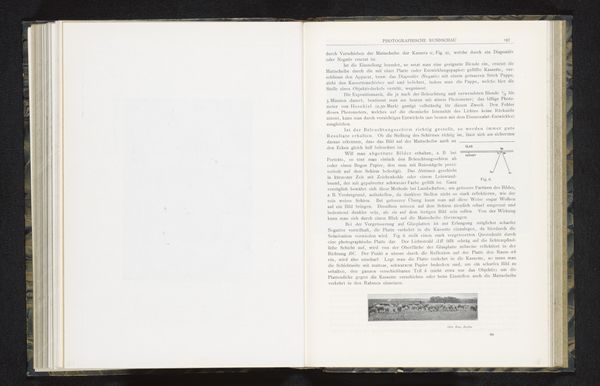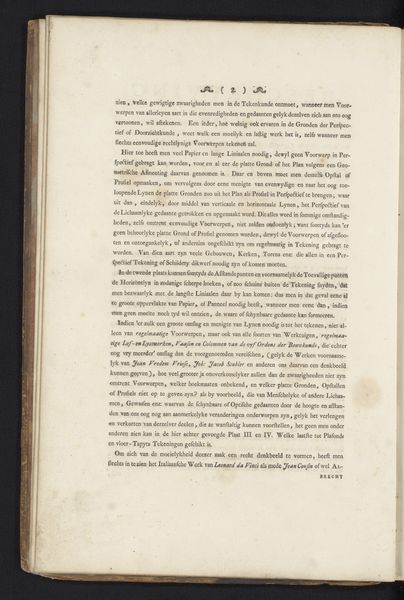
Uitgeversprospectus 'Catalogue des Estampes', prenten van M. de Marcenay de Ghuy 1734
0:00
0:00
print, paper, typography, engraving
#
narrative-art
#
baroque
# print
#
paper
#
typography
#
history-painting
#
engraving
Copyright: Rijks Museum: Open Domain
Curator: What a dense block of text! It makes me think of legal documents. Editor: Indeed, this is an advertising brochure from 1734, technically titled "Uitgeversprospectus 'Catalogue des Estampes', prenten van M. de Marcenay de Ghuy"—an engraving on paper. Ghuy was hoping to entice buyers with descriptions of his available prints. Curator: So, this itself is a print advertising prints? Interesting. Do any of the described prints resonate with a particular visual language of the time? Editor: Absolutely, given the Baroque influences. Though subtle in textual form, the catalogue descriptions themselves act as symbolic entryways. The descriptions evoke heroic narratives and perhaps emotionally charged scenes for potential buyers. Imagine flipping through the catalogue, mentally painting those scenes in your head. Curator: This raises an interesting question: to what extent does something like a printed list actively shape tastes or preferences, not merely reflect them? It makes you wonder about how publishers then might have influenced what kind of imagery had prominence in that period. Were they promoting or responding to public demands? Editor: That is a fundamental question. The printmaking industry had considerable power over what was accessible to wider audiences. The content Ghuy chooses to promote reflects both the artistic sensibilities and political climate—think of history painting as the most lauded of subjects at the time, used as a means of promoting royalist or nationalist ideals. Curator: That suggests his descriptions were crafted to create desires and link those to prestige or social validation through artistic taste. A marketing technique we continue to use today. Editor: Precisely! This object, beyond just a mere catalog, allows insight into 18th century art's influence in cultural life through this artifact's design and distribution. Curator: Seeing it from a different angle like this suddenly makes it much more lively. It emphasizes how every object is linked within cultural, historical frameworks of patronage. Editor: I agree completely. Analyzing even seemingly ordinary objects can connect the symbolism inherent in the images to larger cultural narratives from a particular time and location.
Comments
No comments
Be the first to comment and join the conversation on the ultimate creative platform.
